Thyme is a versatile herb that can be used in a variety of dishes and has many health benefits. It’s a great herb to grow indoors, as it doesn’t require a lot of space or sunlight. In this article, we will show you how to grow thyme indoors so that you can enjoy fresh thyme year-round.
We will cover everything from selecting the right type of thyme to planting and caring for your indoor thyme garden. So, whether you’re a seasoned gardener or a beginner, read on to learn how to grow thyme indoors.
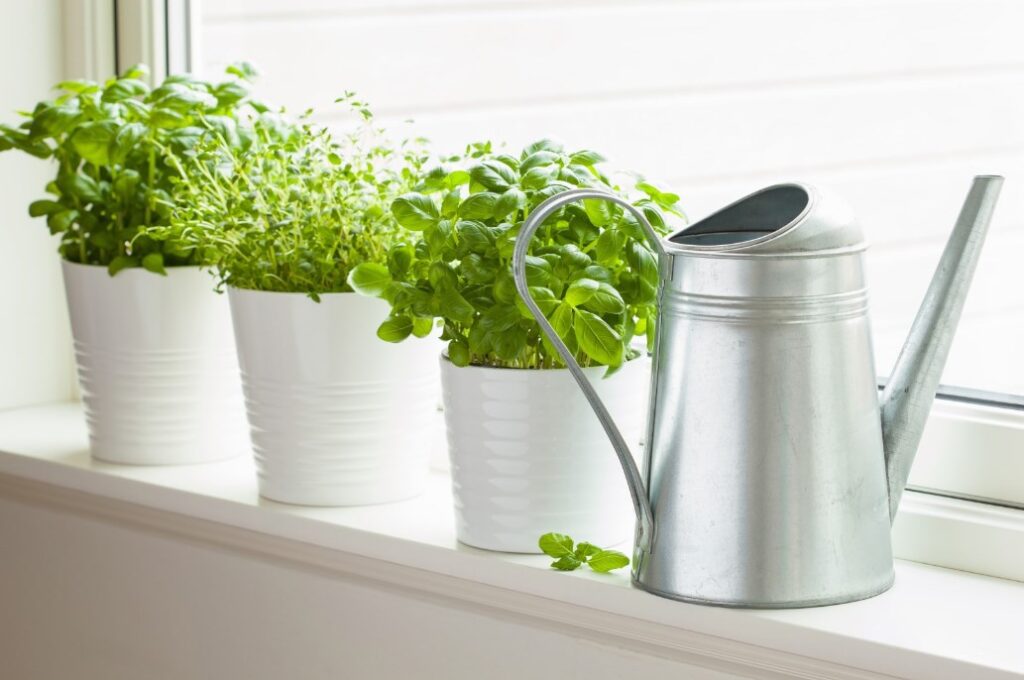
Contents
- 1 General recommendations
- 2 Care tips
- 3 What to do if there are some problems?
- 4 Conclusion
- 5 Frequently asked questions
General recommendations
Thyme is a wonderful herb that is perfect to grow indoors. This Mediterranean herb is known for its distinctive flavor and aroma, making it a popular addition to many dishes.
But did you know that it is also easy to grow thyme in your house, even for beginners? In this detailed guide, we will show you how to grow thyme indoors so that you can enjoy fresh thyme year-round.
Growing thyme indoors process
First, let’s start with selecting the right type of thyme. There are many different varieties of thyme, but some of the most popular ones for growing indoors include lemon thyme and seed thyme.
Lemon thyme has a citrusy flavor and aroma, while seed thyme has a more traditional thyme flavor. Choose the variety that best suits your taste preferences.
Next, you will need to prepare your thyme plants for growing indoors. Thyme plants should be planted in potting soil that has good drainage. Make sure to choose a pot with drainage holes at the bottom to prevent root rot.
Also, it’s important to note that thyme plants prefer well-draining soil and dislike sitting in waterlogged soil.
After you have your pot and soil ready, you can start planting your thyme. Thyme plants can be propagated from stem cuttings or from seeds.
If you’re using stem cuttings, make sure to use woody stems that have been allowed to dry for a few days. If you’re using seeds, simply sprinkle the seeds on top of the soil and gently press them down.
As your thyme plants grow, you may notice that they start to develop woody stems. This is a sign that your thyme is becoming too mature, and it’s time to harvest it.
To harvest thyme, simply snip off the leaves with scissors or a sharp knife. Be sure to leave at least a few leaves on the stem so that your plant can continue to grow.
Growing thyme inside your house is not only easy but also rewarding, providing you with fresh herbs throughout the growing season, which is different from growing thyme outdoors.
However, it’s important to keep an eye out for pests or diseases that can affect thyme plants. If you notice any pests or diseases, take action immediately to prevent them from spreading.
Once you have successfully grown thyme indoors, you can also try growing other herbs like mint, basil, and parsley.
These herbs also prefer similar growing conditions to thyme and can be grown in the same pot or container.

Care tips
Once your thyme is planted, it’s time to take care of it.
The Right Temperature for Growing Thyme Indoors
Thyme is a hardy herb that can tolerate a wide range of temperatures, but it prefers to be grown in temperatures between 60-70 degrees Fahrenheit.
Unfavorable temperatures
If the temperature drops below 50 degrees Fahrenheit, the growth of thyme will slow down or stop completely.
On the other hand, if the temperature goes above 80 degrees of Fahrenheit, the thyme plant will become stressed and may not produce as many leaves.
It’s important to keep thyme away from cold drafts and heating vents as they can cause the leaves to dry out and drop.
To maintain the ideal temperature range, you can place thyme near a sunny window or under grow lights.
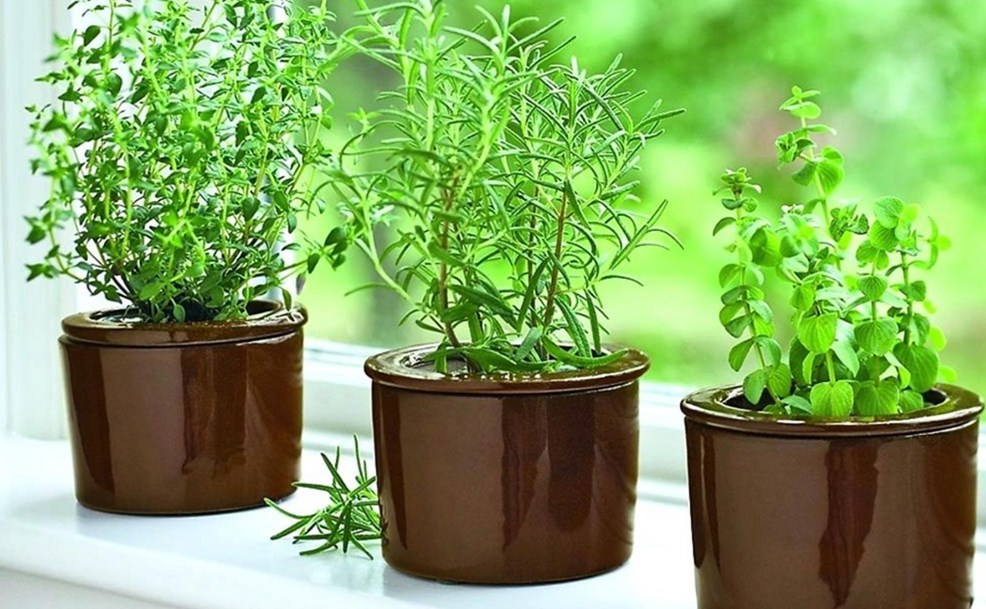
Water and Humidity Level
Thyme is a Mediterranean herb and prefers well-drained soil. It should not be left in standing water as this can lead to root rot.
The soil should be allowed to dry out slightly between watering, and then water the plant thoroughly. This will ensure that the soil is moist but not waterlogged.
Water your thyme plants when the soil surface is dry to the touch and be sure to use a diluted liquid fertilizer every 4-6 weeks.
Optimal humidity
The ideal humidity level for thyme is between 40-60%. If the humidity is too high, it can lead to mold and mildew growth on the leaves, which can be harmful to the plant.
To control humidity, you can place a small fan near the thyme plant to circulate the air.
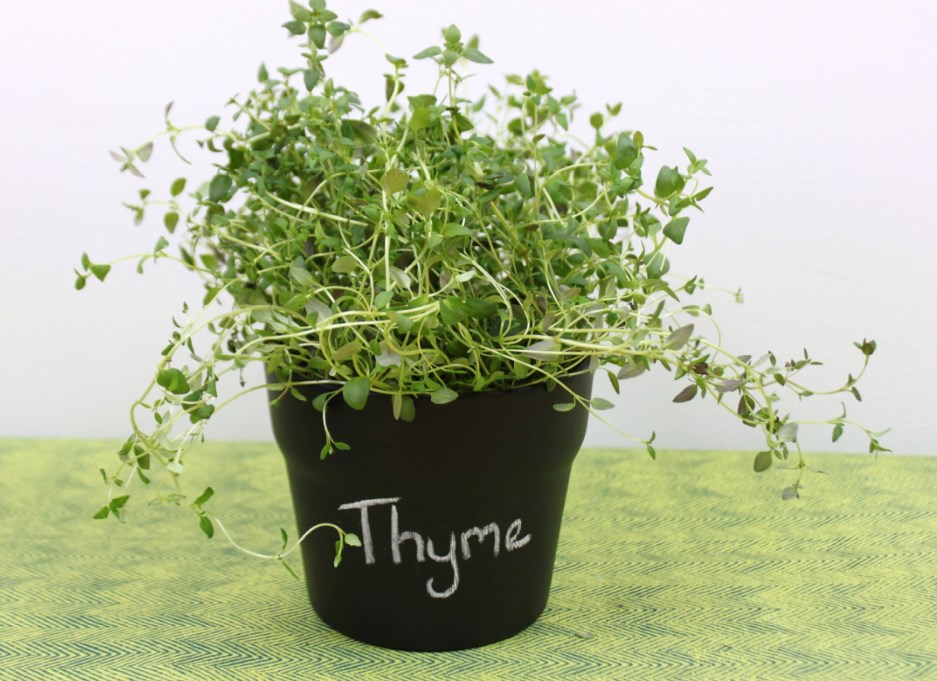
Necessary Nutrients and Fertilizers for Thyme
Thyme prefers slightly acidic soil, with a pH range of 6-7. You can use a balanced fertilizer every 4-6 weeks during the growing season to provide the plant with the necessary nutrients.
Always follow the instructions on the fertilizer package for the appropriate amount to use.
Thyme is also a heavy feeder, so be sure to add organic matter to the soil, such as well-rotted compost or aged manure. This will help to improve the soil structure and provide the plant with the necessary nutrients.
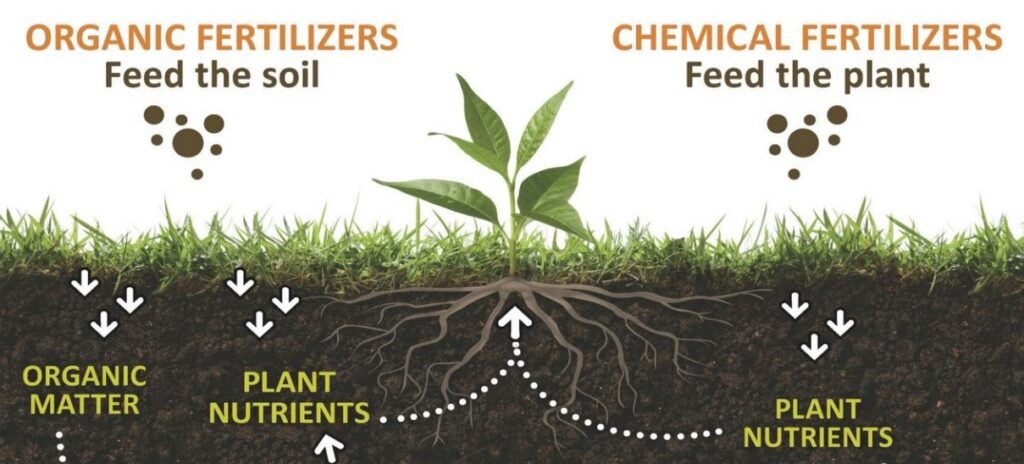
Indoor Pests and Diseases
Thyme is generally resistant to pests and diseases, but it can be susceptible to spider mites and whiteflies.
These pests can cause the leaves to turn yellow and drop, and can also lead to a decrease in the plant’s overall health.
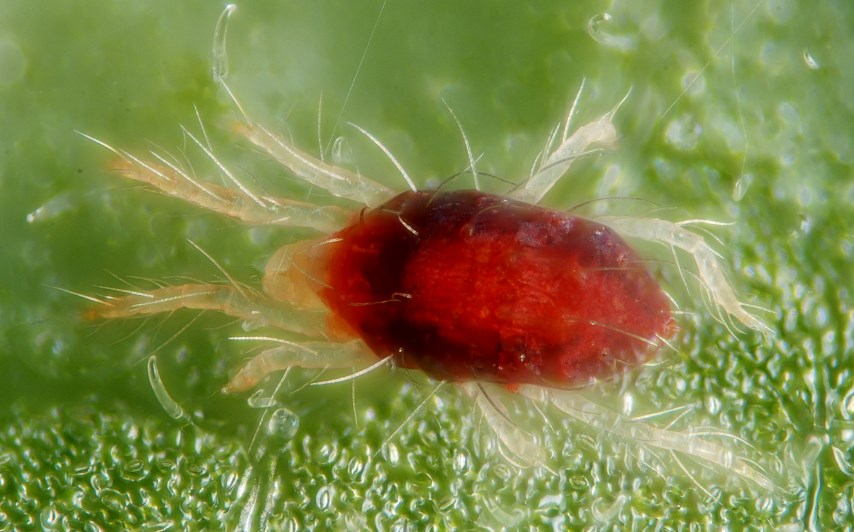
How to control
To control spider mites and whiteflies, you can use insecticidal soap or neem oil. These natural remedies are safe to use and will not harm the thyme plant.
Be sure to spray the entire plant, including the undersides of the leaves.
When to Harvest Thyme
Thyme can be harvested as soon as it is large enough to use. The leaves are most flavorful when the plant is in full sun.
Regular pruning will encourage bushier growth and will also make the plant more compact.
When harvesting thyme, it’s best to snip off the leaves and stems with scissors, rather than pulling the plant out of the soil. This will help to prevent damage to the roots.
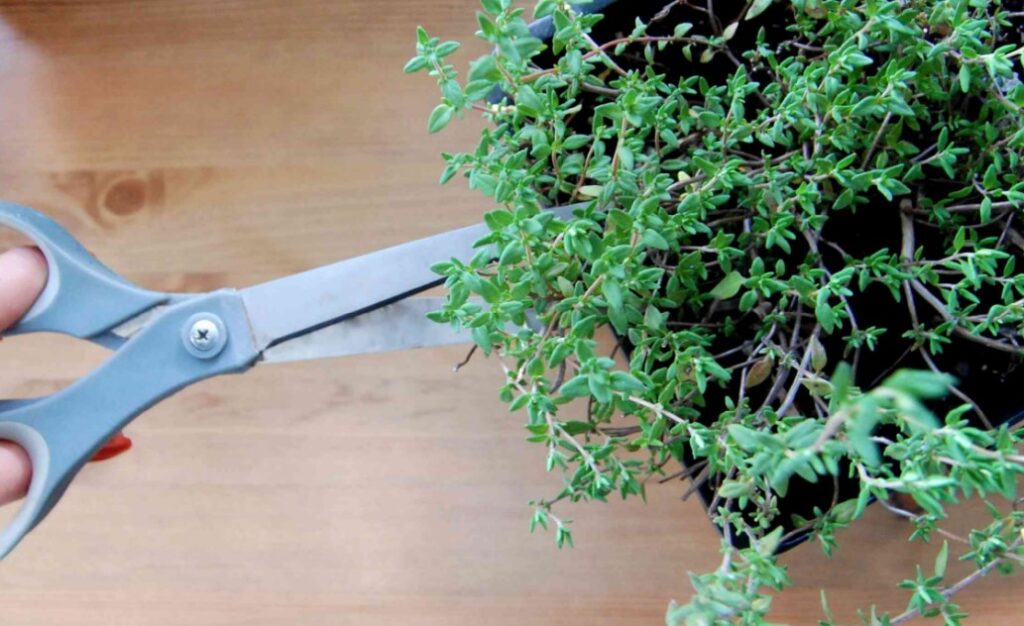
The Best Location for Thyme Indoors
Thyme prefers bright, non-direct light. A south-facing window with filtered light is ideal. Avoid direct sun, as this can scorch the leaves.
Thyme can also be grown under grow lights if natural light is limited.
It’s also worth mentioning that you can propagate thyme from cuttings, which can be taken from a healthy thyme plant outdoors or from an indoor thyme plant.
Best companion
Additionally, you can companion plant thyme with other herbs like parsley, rosemary, and basil, which will help the growth and flavor of thyme.

What are the best pots to grow Thyme indoors?
Your main goal is to grow this plant indoors, so you need the right plant pots and planters. And some essentials for your garden are necessary to maintain your indoor gardening efforts.
Thyme grows well in small pots that you can place on a windowsill or hang the plants with plant hangers to add visual interest.
The best containers to grow Thyme in are unglazed clay (terracotta) pots with good drainage.
The clay is porous, so it helps the soil dry out between waterings. Containers should also be the right size and more on the shallow end of the spectrum to avoid waterlogged soil.

What to do if there are some problems?
Why is my thyme turning black?
If you notice the stem of your thyme is turning black, this is a good sign that the plant is suffering from water stress, either too much or not enough.
It can be very difficult to get the balance of watering right for thyme, and if you have been watering it regularly, then there is a good chance that it has developed root rot.
How to regenerate thyme with root rot?
Root rot is a common problem among plants of thyme, and it’s caused by overwatering or poor drainage, which can happen if there are not enough drainage holes.
If your plant is showing signs of rot in the root, such as yellowing leaves, wilting, or a mushy or blackened root system, it’s important to take action quickly to revive it.
Here are some steps you can take to revive thyme with root rot.
Remove the plant from its pot
Gently remove the plant from its pot. Be careful not to damage the roots while doing this.
Inspect the roots
Inspect the roots to check the extent of the damage. If the roots are blackened, mushy, or slimy, they are likely infected with root rot and need to be removed.
Cut off the damaged roots
Using a sharp pair of scissors, cut off the damaged roots as close to the base of the plant as possible. Be sure to remove all of the damaged roots to prevent the spread of the infection.
Repot the plant
Once you have removed the damaged roots, repot the plant in fresh, well-draining soil. Make sure to use a pot with drainage holes to prevent water from pooling at the bottom.

Provide proper care
Water the plant sparingly, allowing the soil to dry out slightly between watering. Avoid over-watering and make sure the pot has proper drainage. Keep the plant in a location with bright, non-direct light, and avoid direct sun.
Be patient
The thyme may take some time to recover, so be patient and give it the time it needs to heal. Keep an eye on the plant for any signs of stress or new growth.
How To Use Your Fresh herbs In Cooking
Most herbs are commonly used by the most prominent chefs around the world to ordinary food lovers at home. One of them is thyme, which is a very flexible herb with an earthy and a bit of a minty flavor.
Thyme herbs can be used in many ways:
Garnish for soups, pasta, sandwiches, pizza
Mixed in savory dishes for an added distinct taste
Made into teas and cocktail
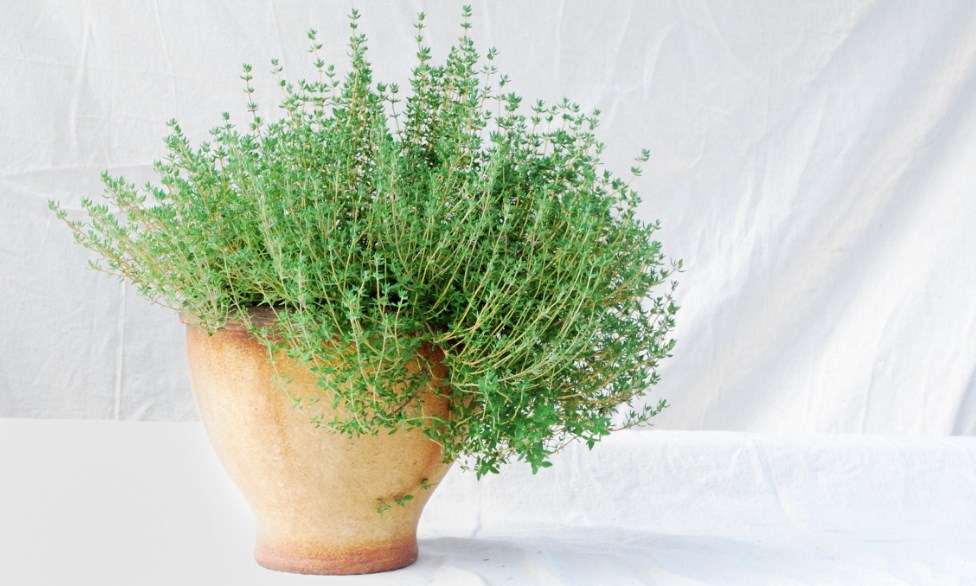
Conclusion
In conclusion, growing thyme indoors is a great way to enjoy fresh sprigs of this wonderful herb all year round. With proper care and attention, you can grow thyme successfully indoors and even propagate new thyme plants. So, grab a pot, some potting soil, and a few thyme seeds or cuttings, and start growing thyme indoors today!
Remember to harvest the thyme leaves when they are completely dry and store them in an airtight container or dry them in the sun, keep the soil moist but not waterlogged, and thyme plants prefer bright light and good drainage.
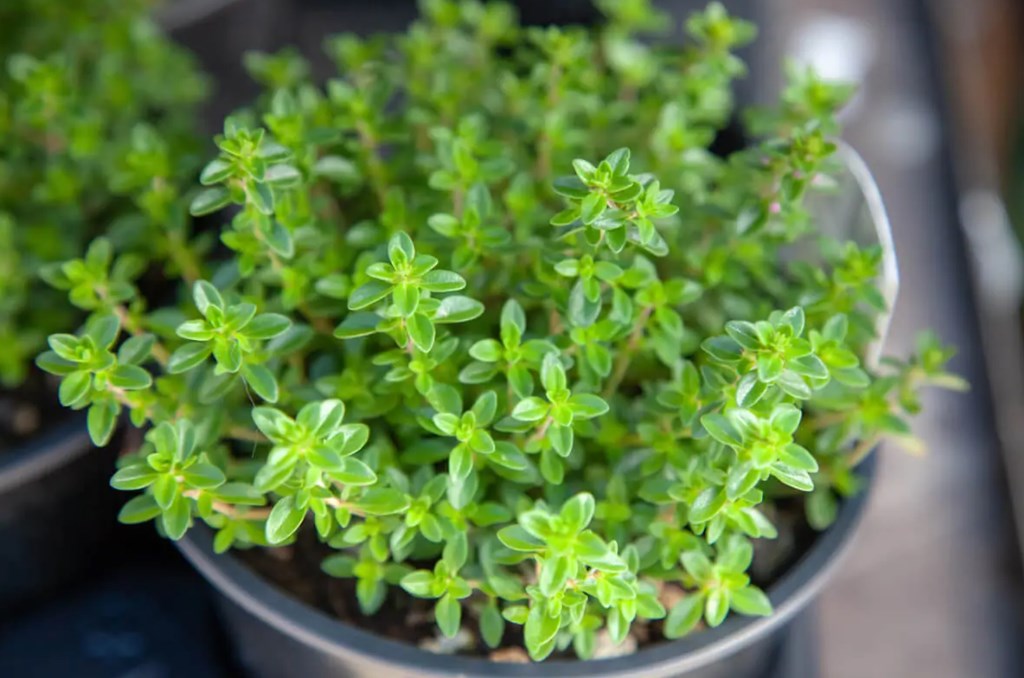
Frequently asked questions
Does thyme grow well inside?
It will grow greatly inside if all the tips are followed.
Can I grow thyme indoors year round?
Yes, as you grow it indoors you can enjoy fresh herbs anytime during the year.
What is the best way to grow thyme indoors?
The best way is to grow it on sandy, well-drained ground. It must also be positioned on the windows receiving at least six hours of direct illumination.
How much light does a thyme plant need?
Thyme plant prefers bright, indirect light and should not be placed in direct sun. A bright windowsill that gets indirect light is a great spot for growing thyme indoors.
Read also: Achieving perfect results when drying herbs in air fryer


